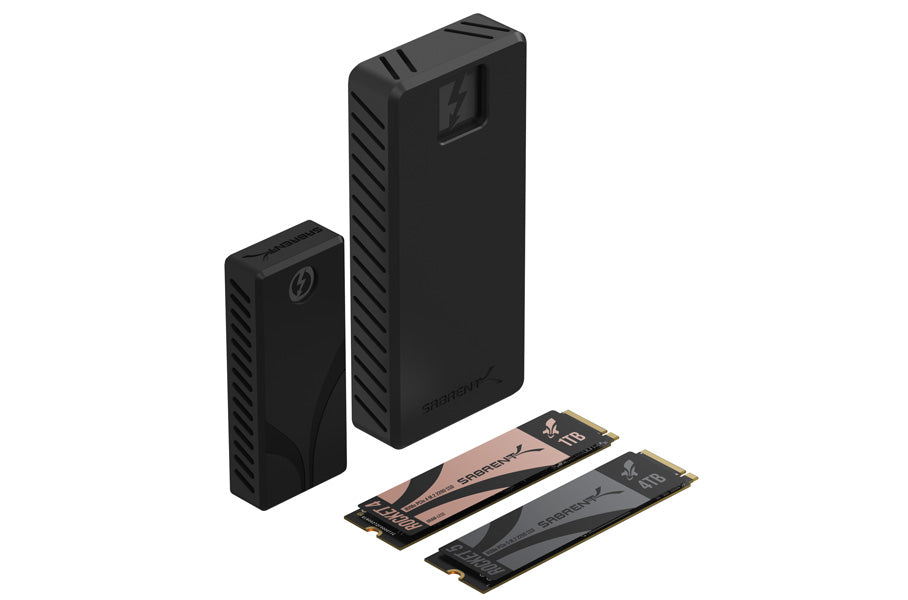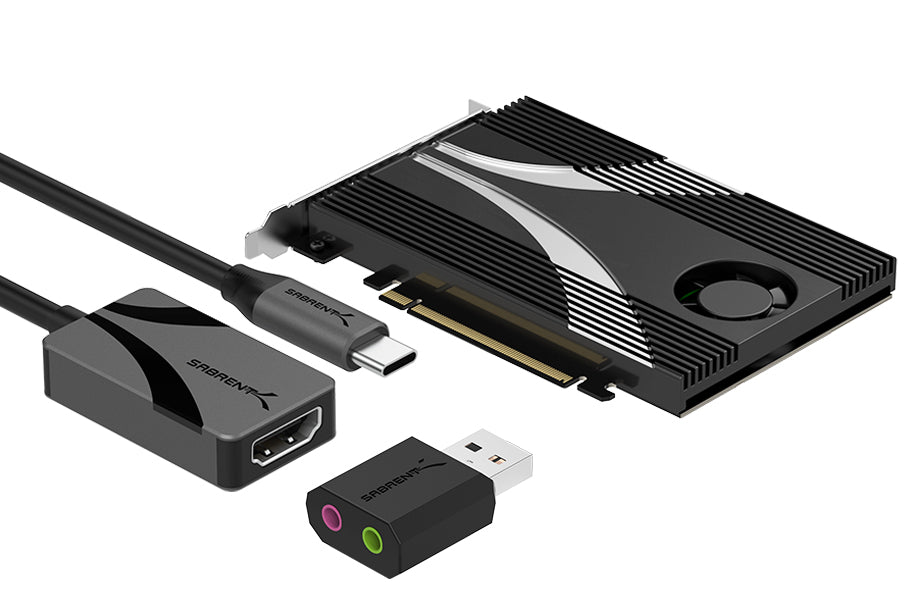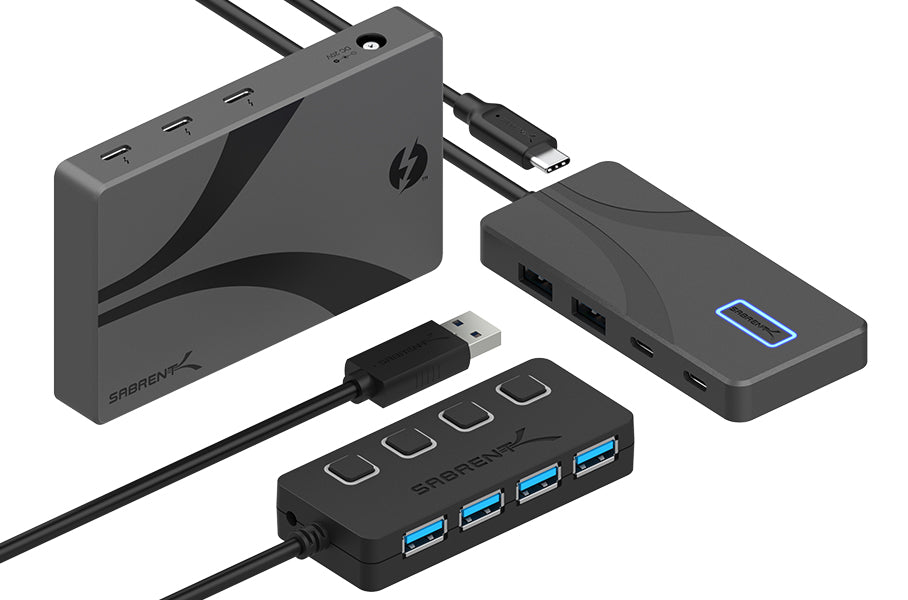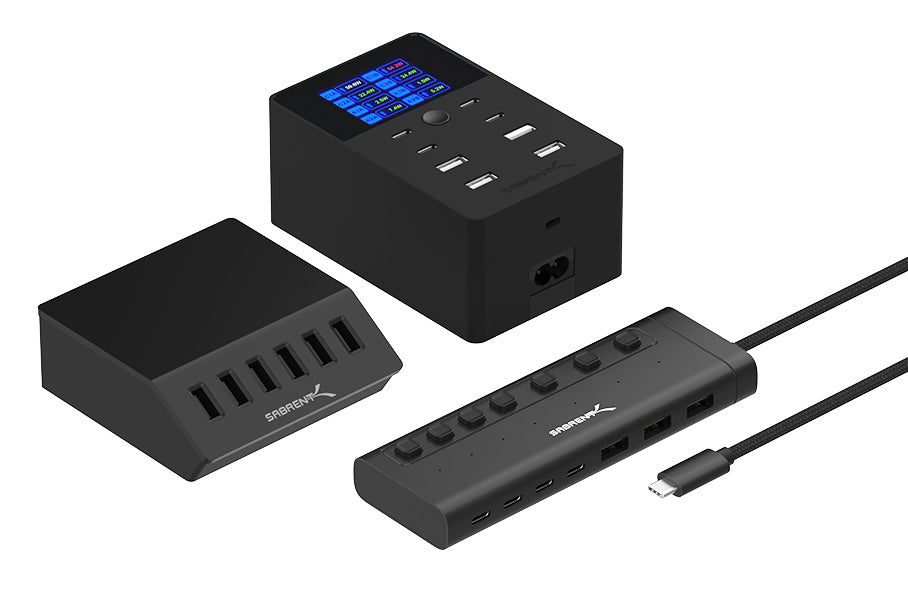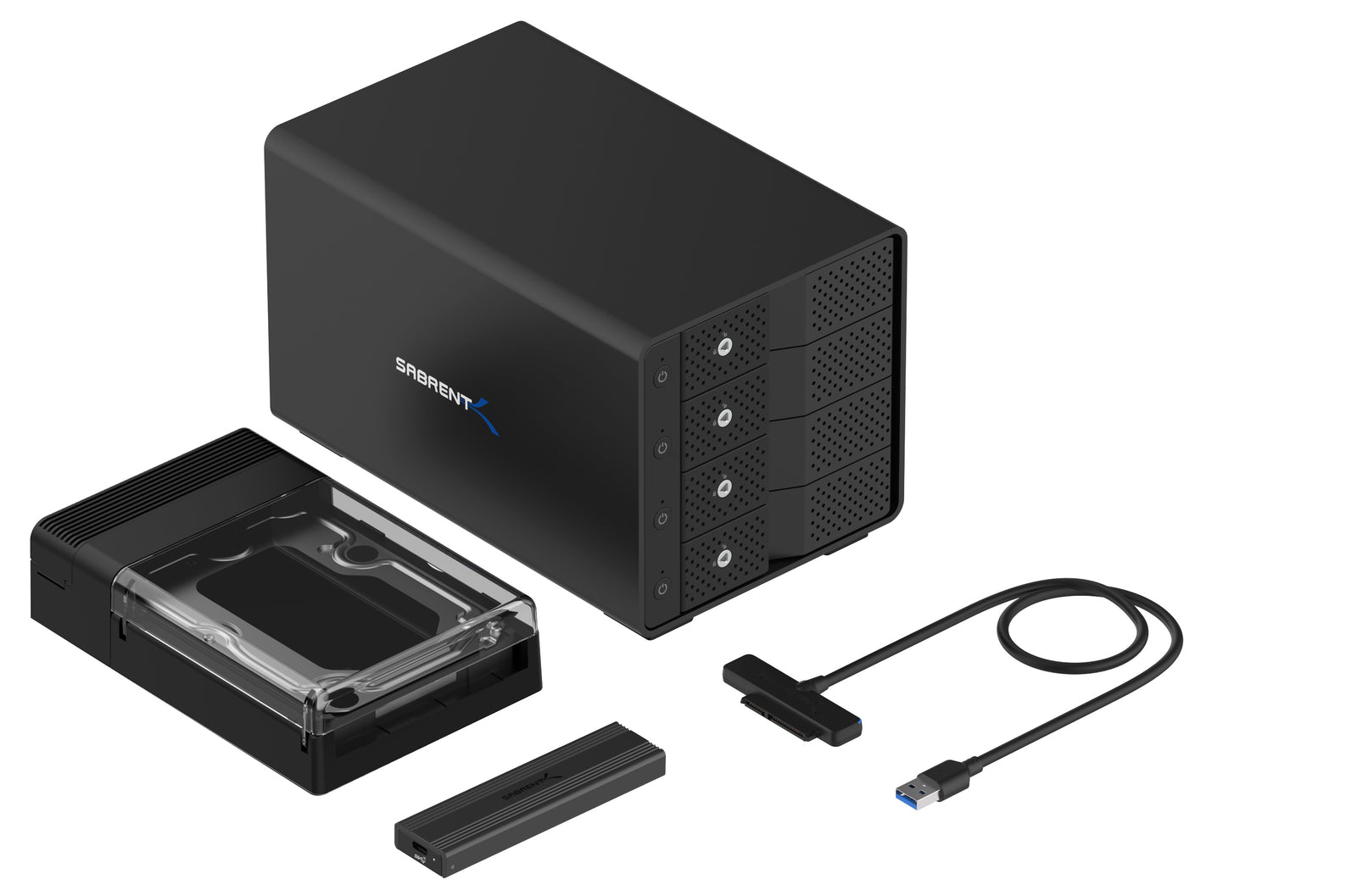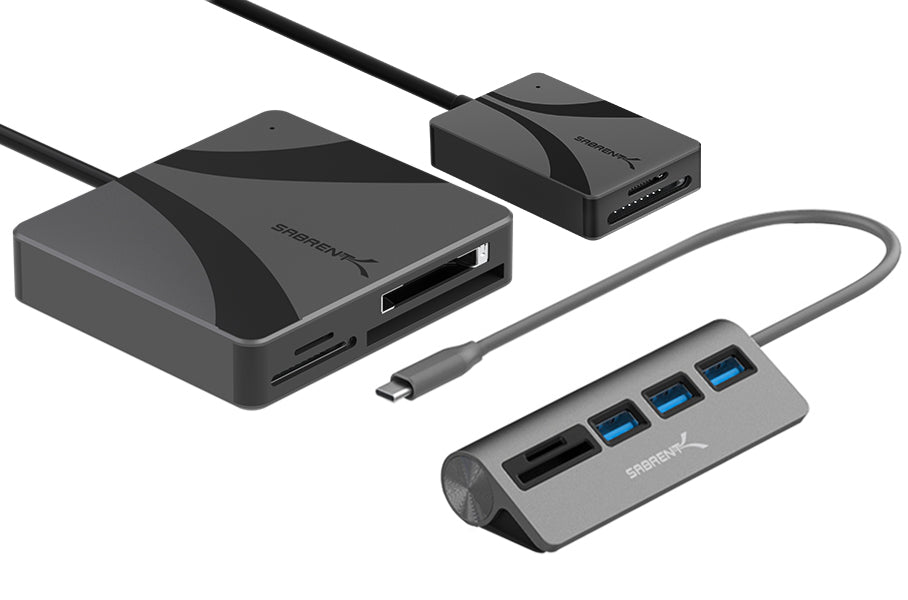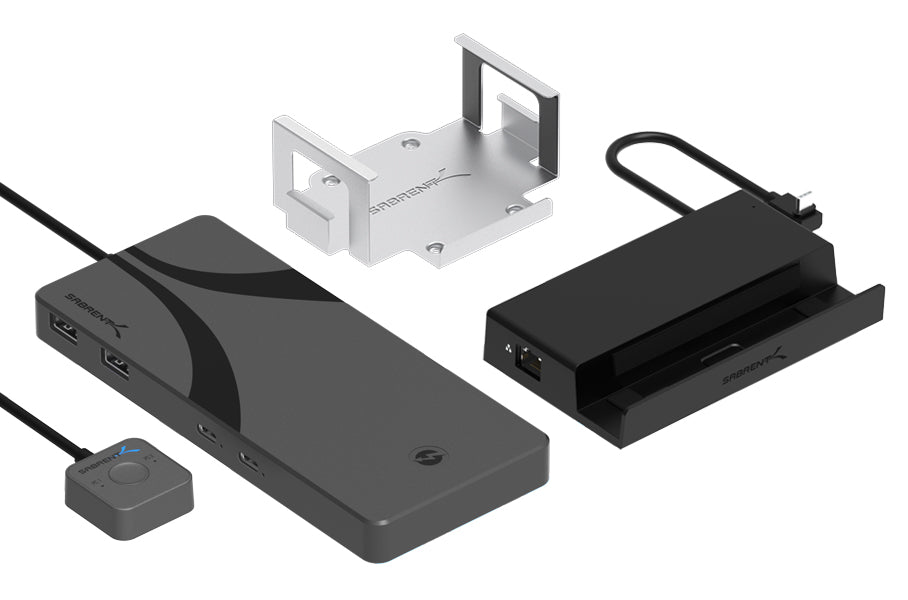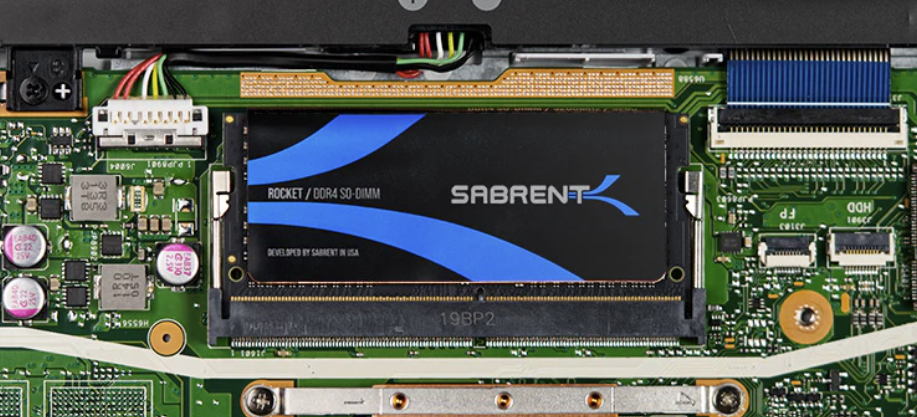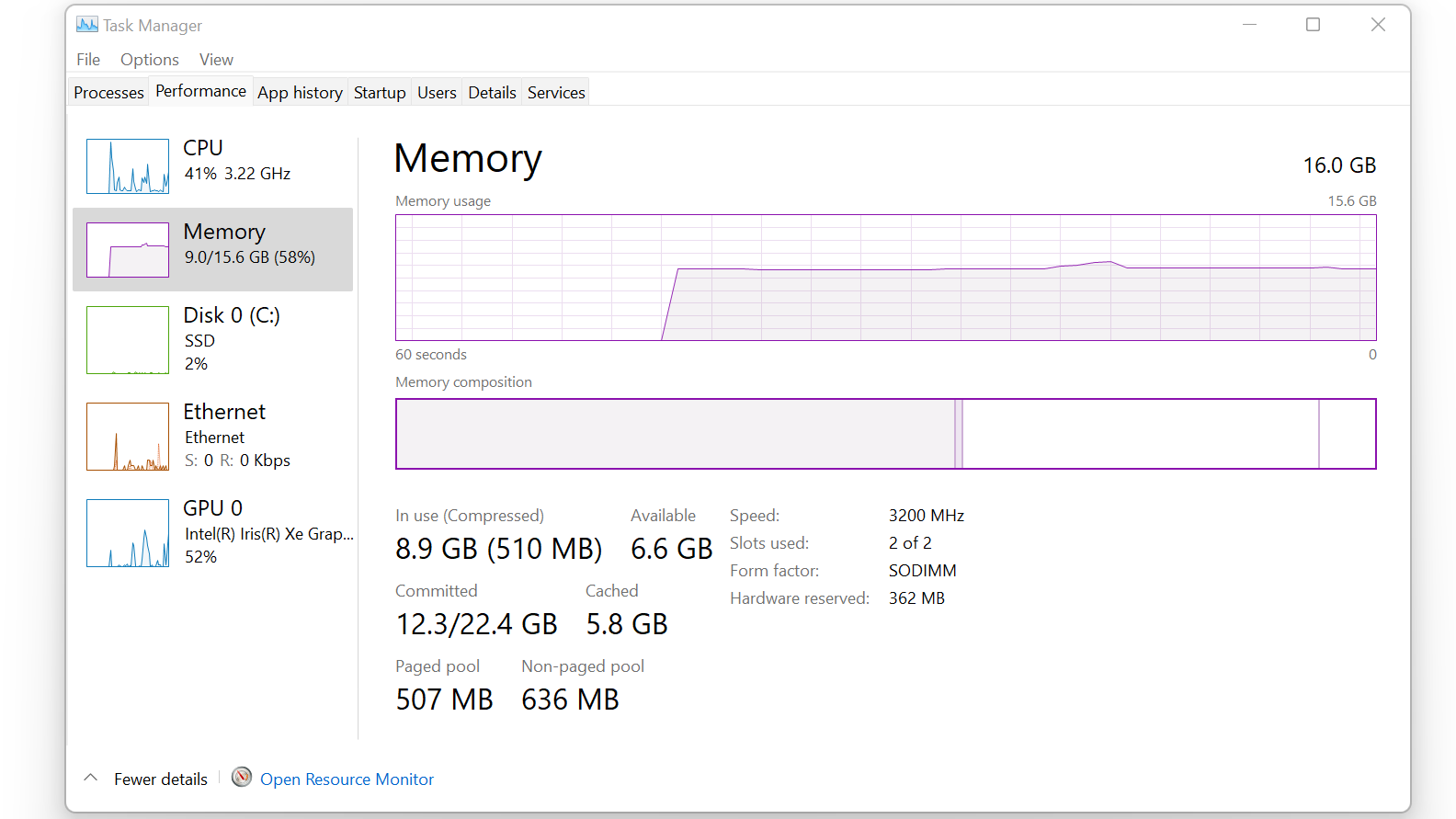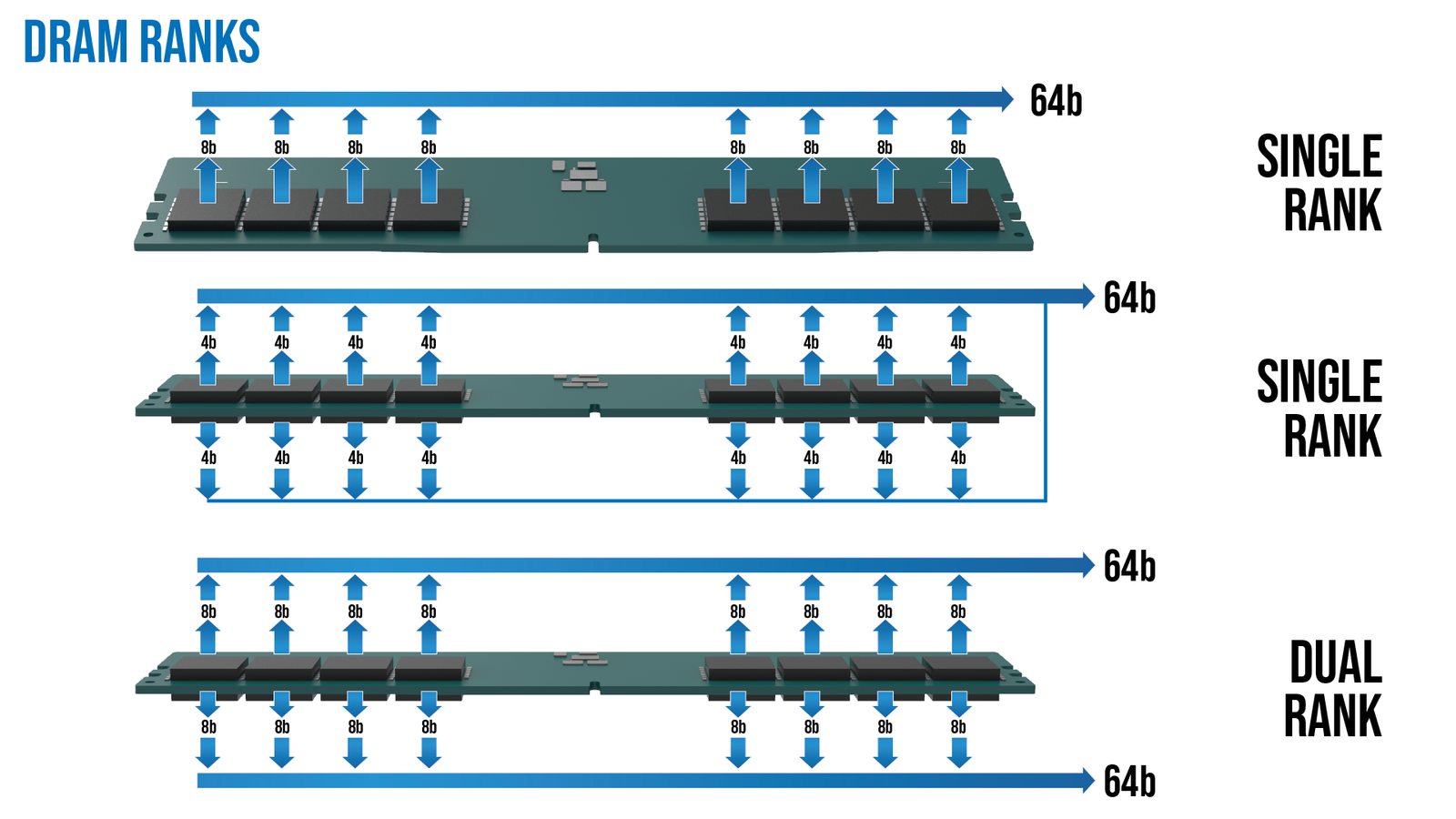Memory performance can be defined through a combination of its speed and its latencies. Speed is measured in MHz and, because DRAM operates on the Double Data Rate (DDR) principle, the effective clock rate is doubled as described by Megatransfers per second (MT/s). 1600 MHz DRAM is thus capable of 3200 MT/s and is often sold simply as 3200 MHz. As DRAM tends to be in a 64-bit configuration, or 128-bit in dual-channel mode, it’s possible to calculate bandwidth by multiplying the effective clock rate by 8 bytes. For example, 3200 MHz achieves 25.6 GBps.
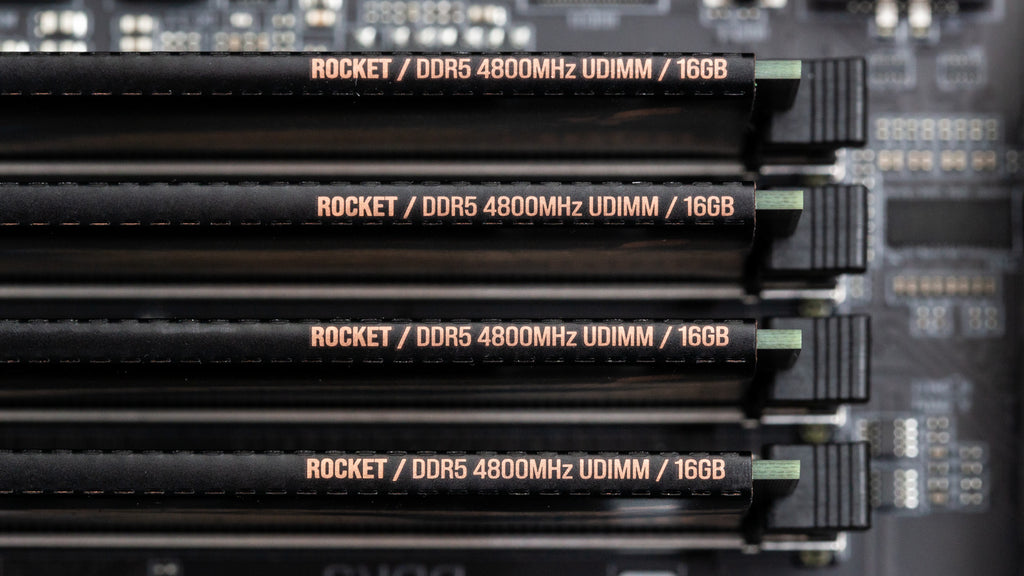
Latency describes the response time of the memory with the Column Access Strobe (CAS) latency being the most prominent. It’s possible to calculate the true latency of the memory by comparing the speed to the CAS latency (CL). As an example, typical JEDEC DDR4-3200 at CL22 has a true latency of 13.75ns as each transfer has a time of 1/1600 seconds by clock rate, or 0.625ns * 22. It is not uncommon for memory to be sold at multiple configurations with a similar true latency. Higher speeds may be limited by the host device and, further, exceeding standard voltage can assist with overclocking.
| Clock | MT/s | SC Bandwidth | DC Bandwidth | CL | TL |
| 1066 | 2133 | 17 GBps | 34.1 GBps | 13 | 12.2ns |
| 1600 | 3200 | 25.6 GBps | 51.2 GBps | 16 | 10ns |
| 1800 | 3600 | 28.8 GBps | 57.6 GBps | 18 | 10ns |
Sometimes it makes sense to use conservative settings with memory as you want to achieve universal compatibility and reliability. Pushing the envelope with speed and timings, on the other hand, can offer better performance for certain tasks, like content creation or high-end gaming. There’s often a good balance to be struck because even if the underlying memory modules are similar, higher guaranteed speeds often come with a higher price. We are always working to find this balance with our DDR4 and DDR5 products.
Find our memory products here.

